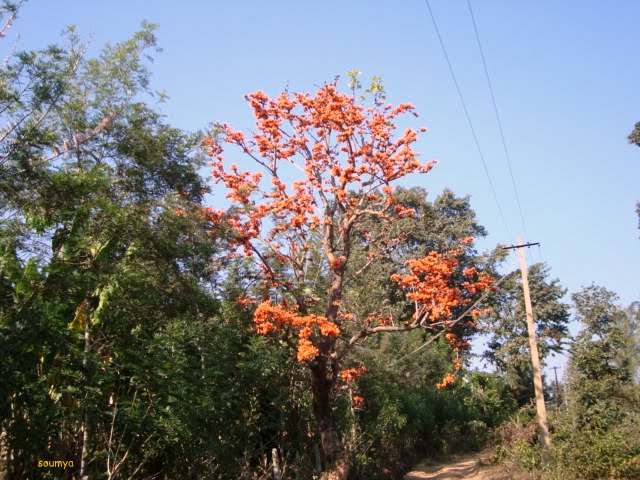The year between the sixth and the seventh b'day of Alter Idem has simply flown by! I could manage only three posts in between. And, I am yet to score my century!
I have noticed that it is not ONLY me. Most of the blogs that I follow have been going through this inactive, rarely- updated phase. No doubts.... we have been charmed by the likes of Facebook, Whatsapp, etc!
Speaking for myself, social media has also reduced the quality time I used to keep aside for reading - something that I'm realising now, when I have to come up with an interesting short story for the birthday post. Thank goodness, my resolution for the anniversary post is to share a story that has stayed with me long after I have read it!
This year, I'll share a lesser known story from the Indian mythology - of how a tree came into existence.
I had read this story in a book called 'Brahma's Hair' by Maneka Gandhi. The book is a collection of myths and stories from all over the country - of about thirty sacred plants and trees, along with some historic and botanical details.
One day, aeons ago, Indra, the king of the Devas, craved for Soma - the intoxicating brew consumed by the Devas. Unfortunately, Indra's pantry had run out of Soma, and his orchard did not have the vine from which the drink was made. Now, this vine grew exclusively in a garden belonging to the Moon, and it was heavily guarded.
To ensure an unending supply of the drink, Indra decided to steal the vine, and a celestial bird was commissioned to perform the task. In a surgical strike of sorts, the bird succeeded in catching the sentries off-guard and flew away with the vine.
One of the sentries though, recovered quick enough to shoot an arrow at the flying bird. The arrow missed the bird. But, it struck the vine, and one of the leaves from the vine fell to the earth. This leaf grew to be the Palash tree.
I do not know if some kind of a drink is brewed from any part of the Palash tree.....
For the unfamiliar, here's a picture of the Palash Tree from my surroundings. During late winter - early spring, it lives up to its English name - Flame-of-the-forest.
I have noticed that it is not ONLY me. Most of the blogs that I follow have been going through this inactive, rarely- updated phase. No doubts.... we have been charmed by the likes of Facebook, Whatsapp, etc!
Speaking for myself, social media has also reduced the quality time I used to keep aside for reading - something that I'm realising now, when I have to come up with an interesting short story for the birthday post. Thank goodness, my resolution for the anniversary post is to share a story that has stayed with me long after I have read it!
This year, I'll share a lesser known story from the Indian mythology - of how a tree came into existence.
I had read this story in a book called 'Brahma's Hair' by Maneka Gandhi. The book is a collection of myths and stories from all over the country - of about thirty sacred plants and trees, along with some historic and botanical details.
One day, aeons ago, Indra, the king of the Devas, craved for Soma - the intoxicating brew consumed by the Devas. Unfortunately, Indra's pantry had run out of Soma, and his orchard did not have the vine from which the drink was made. Now, this vine grew exclusively in a garden belonging to the Moon, and it was heavily guarded.
To ensure an unending supply of the drink, Indra decided to steal the vine, and a celestial bird was commissioned to perform the task. In a surgical strike of sorts, the bird succeeded in catching the sentries off-guard and flew away with the vine.
One of the sentries though, recovered quick enough to shoot an arrow at the flying bird. The arrow missed the bird. But, it struck the vine, and one of the leaves from the vine fell to the earth. This leaf grew to be the Palash tree.
I do not know if some kind of a drink is brewed from any part of the Palash tree.....
For the unfamiliar, here's a picture of the Palash Tree from my surroundings. During late winter - early spring, it lives up to its English name - Flame-of-the-forest.

Comments
Post a Comment